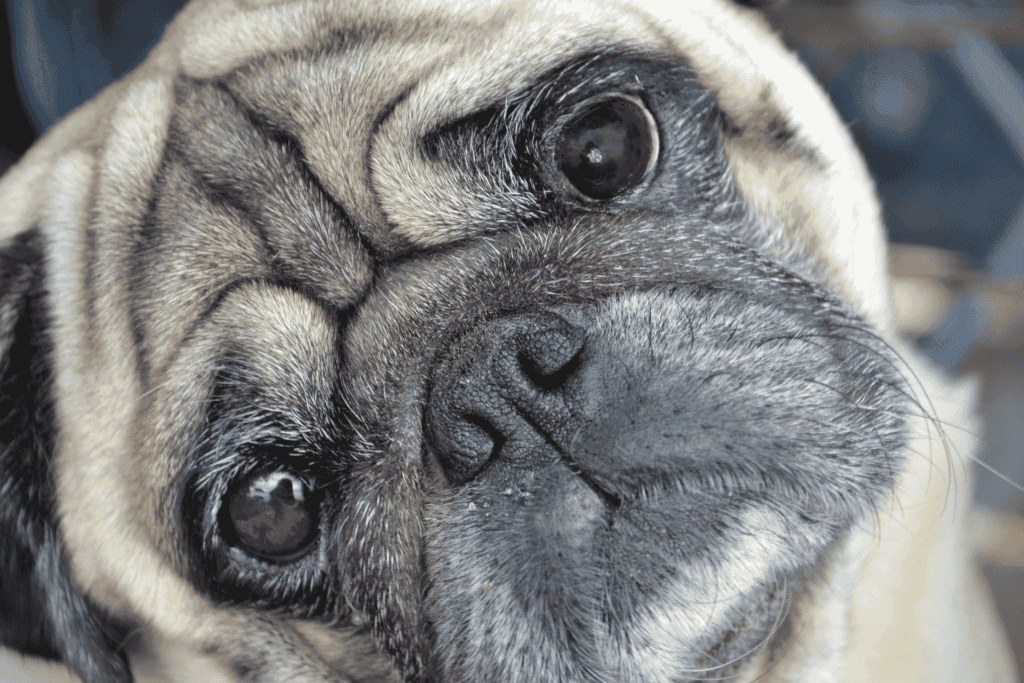Keratoconjunctivitis sicca (KCS) or dry eye, is an eye condition commonly diagnosed in dogs, and less commonly in other species. The medical term means inflammation of the cornea and surrounding tissues from drying. KCS is a condition resulting from inadequate or lack of tear production from the lacrimal gland, and/or the gland of the third eyelid.
What Causes KCS?
Normal tears are necessary to provide nutrition and oxygen to the cornea (the surface of the eye). Tears also lubricate the cornea and remove any debris or infectious agents that may contact the eye.
Any condition that impairs the dog’s ability to create tears can result in a secondary condition of dry eye. Some of the common causes of KCS in dogs include:
- Immune-mediated diseases that damage the tear-producing glands, thought to be an inherited disorder
- Infectious disease, such as canine distemper virus
- Congenital disease, such as small or absent lacrimal glands
- Neurologic disease, such as loss of nerve innervation to the eye
- Endocrine disease, such as diabetes, Cushing’s disease, Addison’s disease, and hypothyroidism
- Drug toxicity, including use of sulfa derivative drugs
- Radiation therapy near the eye
- Prolapsed gland of the third eyelid (“cherry eye”) and/or surgical removal of the gland
Certain breeds are more likely to develop dry eye, suggesting a genetic component to the disease. Commonly affected breeds include the Cavalier King Charles Spaniel, Pug, Boston Terrier, English Bulldog, Lhasa Apso, Shih Tzu, and West Highland White Terrier. However, any breed can develop KCS.
How Is KCS Diagnosed?
The most common signs of dry eye are painful, red eyes with thick greenish mucus discharge. Blinking, squinting, and pawing at the eye are all signs of pain and discomfort. Dry eye most commonly occurs in both eyes, and some pets may develop corneal ulceration (scarring) or bacterial conjunctivitis. Corneal ulceration with bacterial infection can result in the loss of the eye, and chronic dry eye can result in corneal pigmentation, corneal scarring, and vision loss.
Several diagnostic tests are performed to diagnose dry eye. The corneal surface cells and tear film will be examined with a specialized instrument called a biomicroscope. A Schirmer Tear Test will also be performed, which is a paper test strip used to measure tear production. If your pet has clinical signs of KCS but normal tear production, a tear break-up timed test may be performed.
How Is KCS Treated?
Treatment is aimed at restoring your pet’s tear production, reducing inflammation and discomfort, and supplementing the inadequate tears. Lacrimostimulants (available in ointment or drops form) are medications that that stimulate tear production by the lacrimal glands and reduce inflammation. These medications, including cyclosporine and tacrolimus, can take 4-6 weeks before a maximal response is seen.
During this time, it’s important to supplement the tears with artificial tears to keep the cornea moist and healthy. Drops will typically need to be applied every two to six hours, depending on the severity of the dry eye.
Although some pets initially resist eye medications, our team can help teach you some gentle techniques to help your dog accept these medications.
Parotid duct transposition is a surgical intervention that can be considered if medical intervention is not effective in treating KCS.
What Is The Prognosis for a Dog With KCS?
With today’s tear-stimulating medications, the prognosis for dogs diagnosed with dry eye has never been better. About 80% of patients will respond favorably to medical therapy and most dogs begin to feel much better within days of initiating treatment.
Dry eye requires lifelong medical management. With diligent at-home management and regular veterinary exams, most dogs can enjoy a pain-free life. If dry eye is diagnosed late in the condition, secondary infection is present, or your dog has allergies, poor eyelid confirmation, a pronounced globe, or ear disease, their disease can be more difficult to manage. It is critical that you follow your veterinarian’s instructions for care to maximize chances of a successful outcome.
The team at Westfield Veterinary Group is here to help. If you have any questions or concerns about KCS in your pet, please give our team a call.




